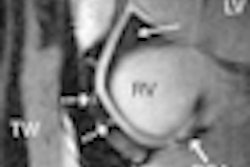Thousands of men in the U.K. diagnosed with low-risk localized prostate cancer are delaying aggressive treatment, according to a new study in the October issue of BJU International. Instead, they are opting for active surveillance that includes monitoring and testing of prostate-specific antigen (PSA) levels.
The study, which evaluated the treatment choices of nearly 9,000 men with low-risk, localized prostate cancer between 2000 and 2006, identifies a significant shift in clinical practice in the U.K. with respect to choosing active surveillance over aggressive treatment, according to principal investigator Chris Parker, MD, a clinical oncologist in the section of academic radiotherapy at the Institute of Cancer Research in London (BJU International, October 2010, Vol. 106:8, pp. 1161-1164).
The researchers used data from the British Association of Urological Surgeons (BAUS) Cancer Registry, whose database currently includes more than half of all prostate cancer cases in the U.K. Out of 43,322 cases of localized prostate cancer recorded between 2000 and 2006, a total of 8,860 men met the low-risk criteria. On a calendar-year basis, the percentage of low-risk patients increased from 16% in 2000 to 21% in 2006.
Between 2000 and 2002, the percentage of these low-risk patients selecting active surveillance was 0% to less than 1%, according to the BAUS Registry. This increased to 4% in 2003, 21% in 2004, 28% in 2005, and 39% in 2006. By comparison, the percentage of patients opting for radiation therapy declined from 23% in 2000 to 9% in 2006, and surgery declined from 27% to 15%.
Treatment choices were associated with age of the patient and also with socioeconomic status. Of the 1,305 patients 75 years of age and older, 64% were under active surveillance, compared with 3% who underwent radiation therapy and 1% who had surgery.
Between 2004 and 2006, only 23% of men who lived in the most affluent geographic areas elected active surveillance treatment, compared with 36% of men in the lowest socioeconomic quartile. The authors suggested that low-income patients may not have been able to take time off from work to have more aggressive treatments, may not have been able to pay for treatment-related costs, or may have had more comorbidities that precluded other options. Thirty-four percent of patients living in affluent areas elected to have radical prostatectomies, compared with 19% in the poorest geographic areas.
Parker, who also is a senior lecturer and honorary consultant in clinical oncology at the Royal Marsden NHS Foundation Trust in London, is a strong advocate of active surveillance. His research focuses on identifying better means of predicting the aggressiveness of prostate cancer.
In 2008, the National Institute for Health and Clinical Excellence (NICE), an independent organization responsible for providing national guidance on promoting good health and preventing and treating ill health in the U.K., recommended active surveillance as a treatment option for men with low-risk localized prostate cancer.
By Cynthia E. Keen
AuntMinnie.com staff writer
October 21, 2010
Related Reading
MedCAC bombarded with info about prostate radiotherapy, April 26, 2010
Specialty may bias doctors' prostate cancer advice, March 9, 2010
Anterior biopsy helpful in spotting prostate cancer spread, November 19, 2009
Options grow for treatment of prostate cancer, August 9, 2007
Low-grade prostate cancer may not require aggressive treatment, May 26, 2006
Copyright © 2010 AuntMinnie.com

















